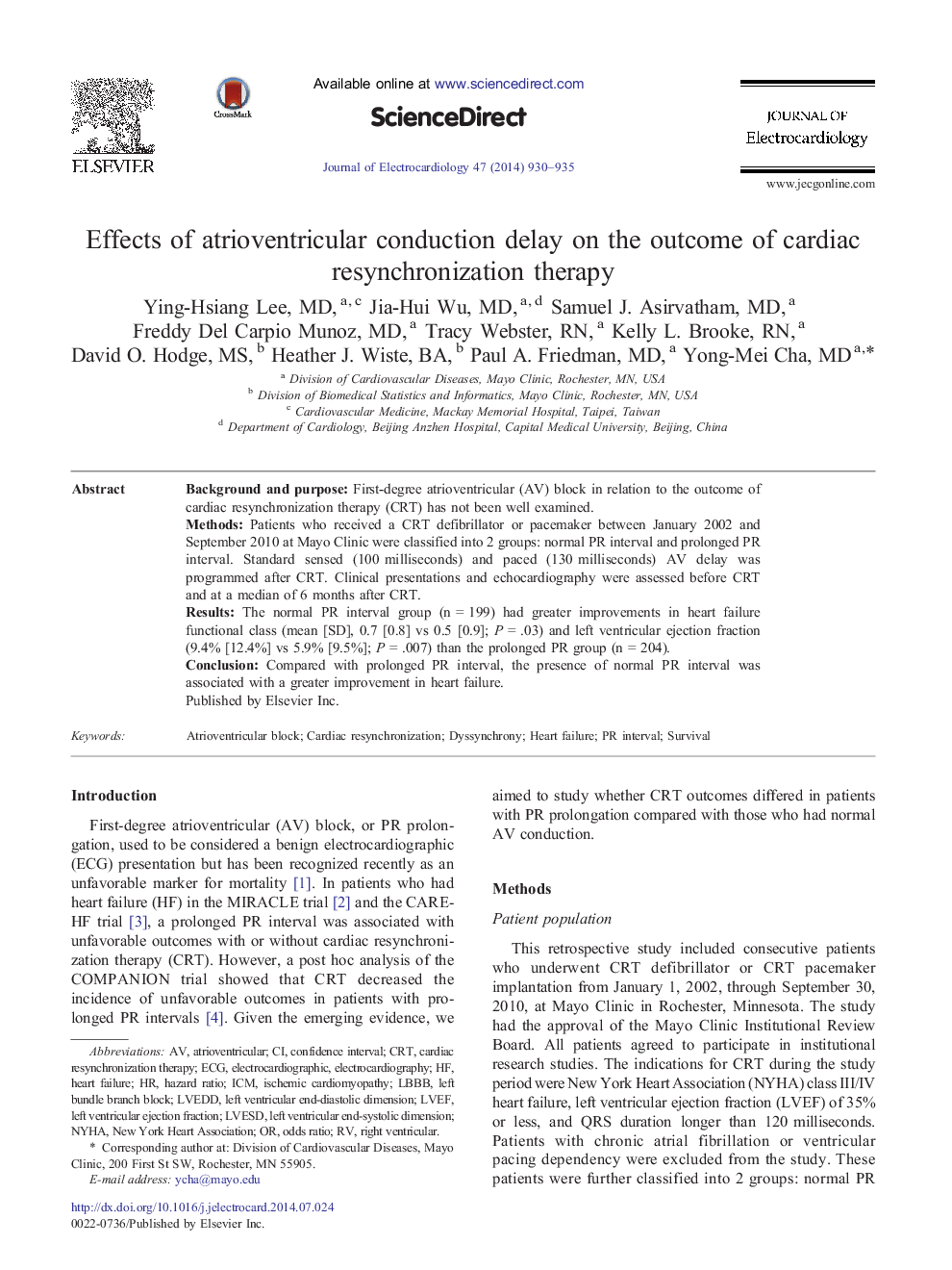| Article ID | Journal | Published Year | Pages | File Type |
|---|---|---|---|---|
| 5986653 | Journal of Electrocardiology | 2014 | 6 Pages |
â¢First-degree atrioventricular (AV) block in relation to the outcome of cardiac resynchronization therapy (CRT) has not been well examined.â¢Patients who received a CRT defibrillator or pacemaker between January 2002 and September 2010 at Mayo Clinic were classified into 2 groups: normal PR interval and prolonged PR interval.â¢The normal PR interval group (n = 199) had greater improvements in heart failure functional class and left ventricular ejection than the prolonged PR group (n = 204).â¢Compared with prolonged PR interval, the presence of normal PR interval was associated with a greater improvement in heart failure.
Background and purposeFirst-degree atrioventricular (AV) block in relation to the outcome of cardiac resynchronization therapy (CRT) has not been well examined.MethodsPatients who received a CRT defibrillator or pacemaker between January 2002 and September 2010 at Mayo Clinic were classified into 2 groups: normal PR interval and prolonged PR interval. Standard sensed (100 milliseconds) and paced (130 milliseconds) AV delay was programmed after CRT. Clinical presentations and echocardiography were assessed before CRT and at a median of 6 months after CRT.ResultsThe normal PR interval group (n = 199) had greater improvements in heart failure functional class (mean [SD], 0.7 [0.8] vs 0.5 [0.9]; P = .03) and left ventricular ejection fraction (9.4% [12.4%] vs 5.9% [9.5%]; P = .007) than the prolonged PR group (n = 204).ConclusionCompared with prolonged PR interval, the presence of normal PR interval was associated with a greater improvement in heart failure.
